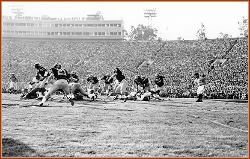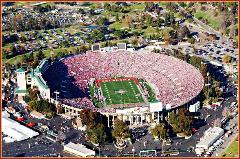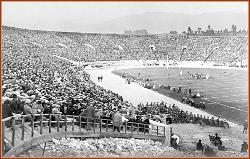



New Yankee Stadium
The Yankees have torn down 400 trees and have ripped apart Macombs Dam Park
and John Mullaly Park, making way for the team's new stadium. The new stadium will
have some replicas from Yankee Stadium, which will be completely demolished. The
only portion of the historic stadium to be preserved is Monument Park, which will be
relocated with the team. When the project is completed, no portion of the historic
stadium or its field, the third-oldest facility in baseball, will remain. Three public
baseball fields will be built atop the Yankee Stadium field after the Yankees' new
stadium opens. These new recreation facilities were designed to alleviate the loss of
parkland to the Yankees' new stadium.
The $1.3 billion stadium project, which includes $450 million in public subsidies, is
being constructed on 22 acres of public parkland north of the team's East 161st Street
home. The public costs include acquiring land for the stadium, building parking
garages (including one on the former site of John Mullaly Park, which consisted of
handball courts and was already being used for parking on game days), tearing down
Yankee Stadium, and tax breaks. It does not include a $45 million Metro-North station,
which will be paid for entirely by the public (through money accumulated in the MTAs
budget since the 1980s, specifically for this purpose). Of the stadium's remaining cost,
up to 40 percent may be subsized through reduced revenue-sharing contributions. The
Yankees' $200 million payroll is consistently the highest in baseball, making them the
largest contributor to the league's revenue-sharing pool. It has been estimated that the
Yankees will contribute one-third of their new stadium's cost.
Although groundbreaking has taken place, community groups have not given up their
fight to preserve their rare patch of parkland in one of the nation's poorest
congressional districts. A federal lawsuit accuses the National Park Service of not
exploring other options that preserve the neighborhood's parks and for not providing
equivalent replacement parkland elsewhere. This negligence, the lawsuit says, violates
federal laws designed to protect parkland from private business development. The
Yankees' stadium and free-parkland acquisition were proposed in June 2005 without
input from the community but with preapproval from pertinent legislative bodies.
Consequently, it was approved within days of its announcement, forcing underfunded
community groups to scramble for support. Even as fierce opposition mounted from
parks and community groups, they were left with no room to maneuver to save its
parkland. One year after the Yankees' new-stadium news conference, the team
cleared all legislative, financial, and procedural hurdles.
The Yankees expect to begin the 2009 season in their new home. This would make
2008 the final season at the Yankees' famed ballpark. Baseball commissioner Bud
Selig has noted that playing the 2008 All-Star Game at Yankee Stadium before it
becomes dust would be "a very intriguing possibility," while noting that several stadiums
remain in the running.
Architect: HOK Sport (Kansas City)
Developer: Tishman Speyer (New York)
Construction: Turner Corp. (Dallas); Skanska USA Civil (Queens) will build structural
steel frame and pilings
Owner: New York Yankees
Cost: $1.02 billion
Public financing: $220 million from New York City for parking facilities ($75 million),
parkland along the waterfront ($135 million) and other work related to the stadium
Private financing: $800 million from the Yankees.














